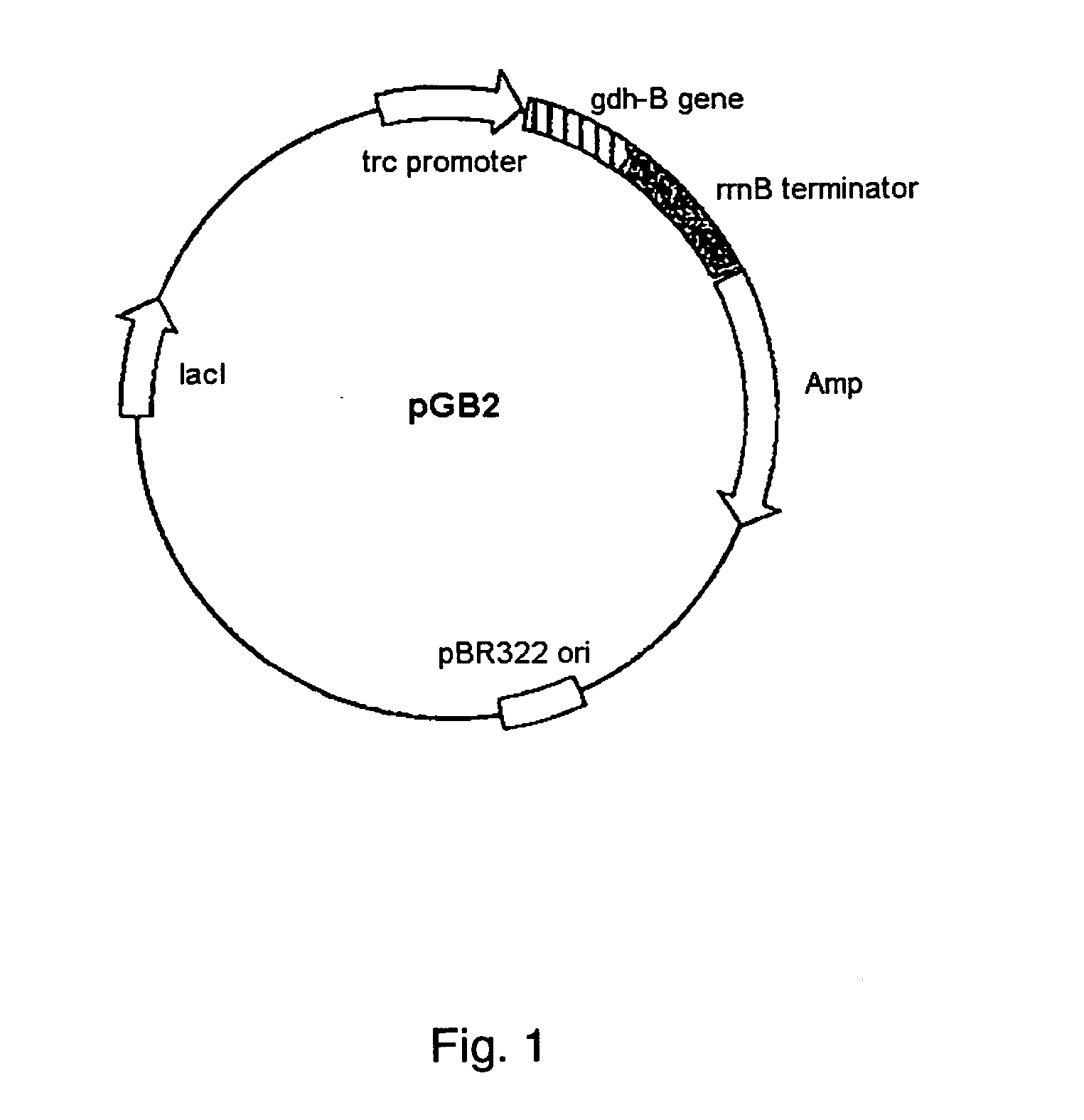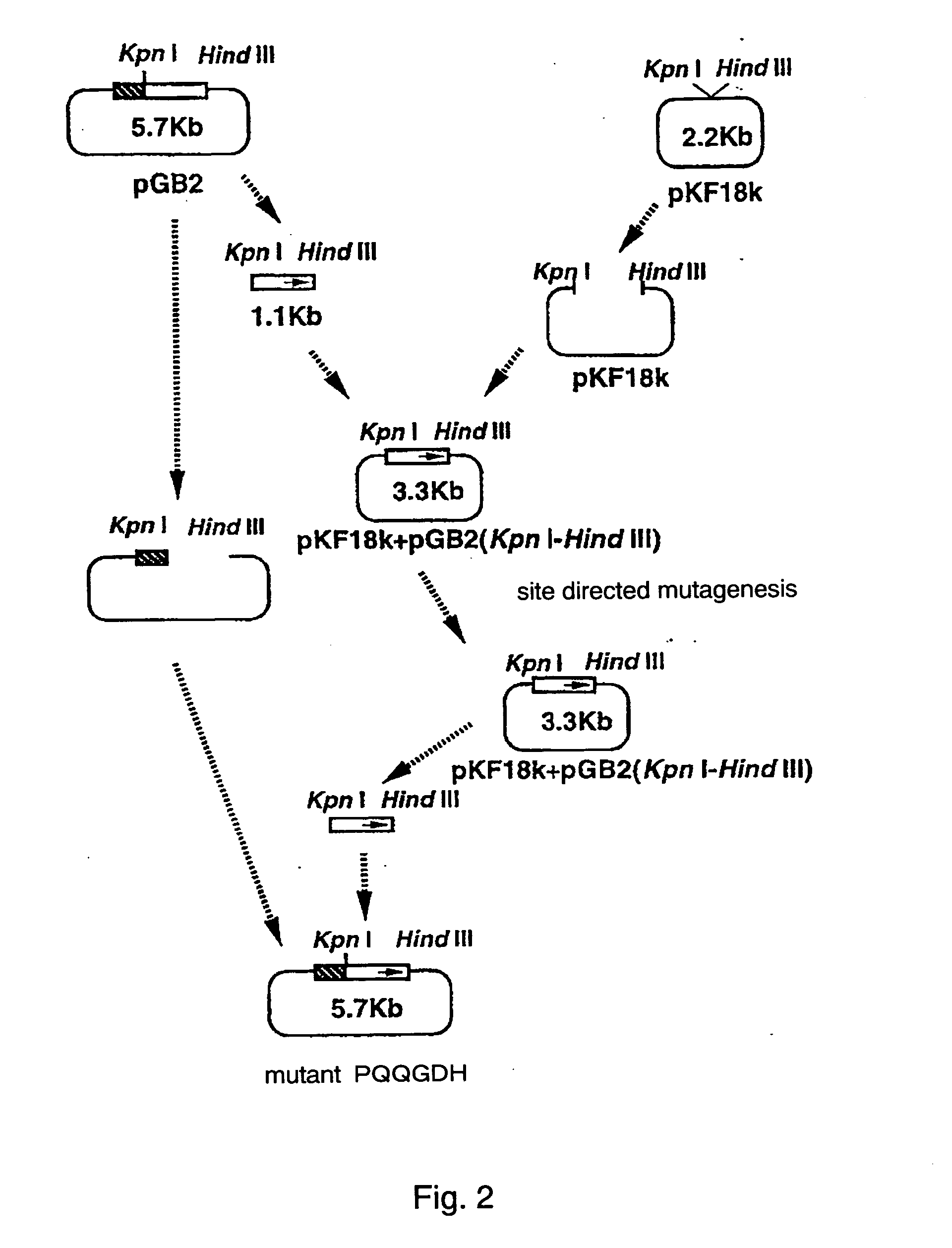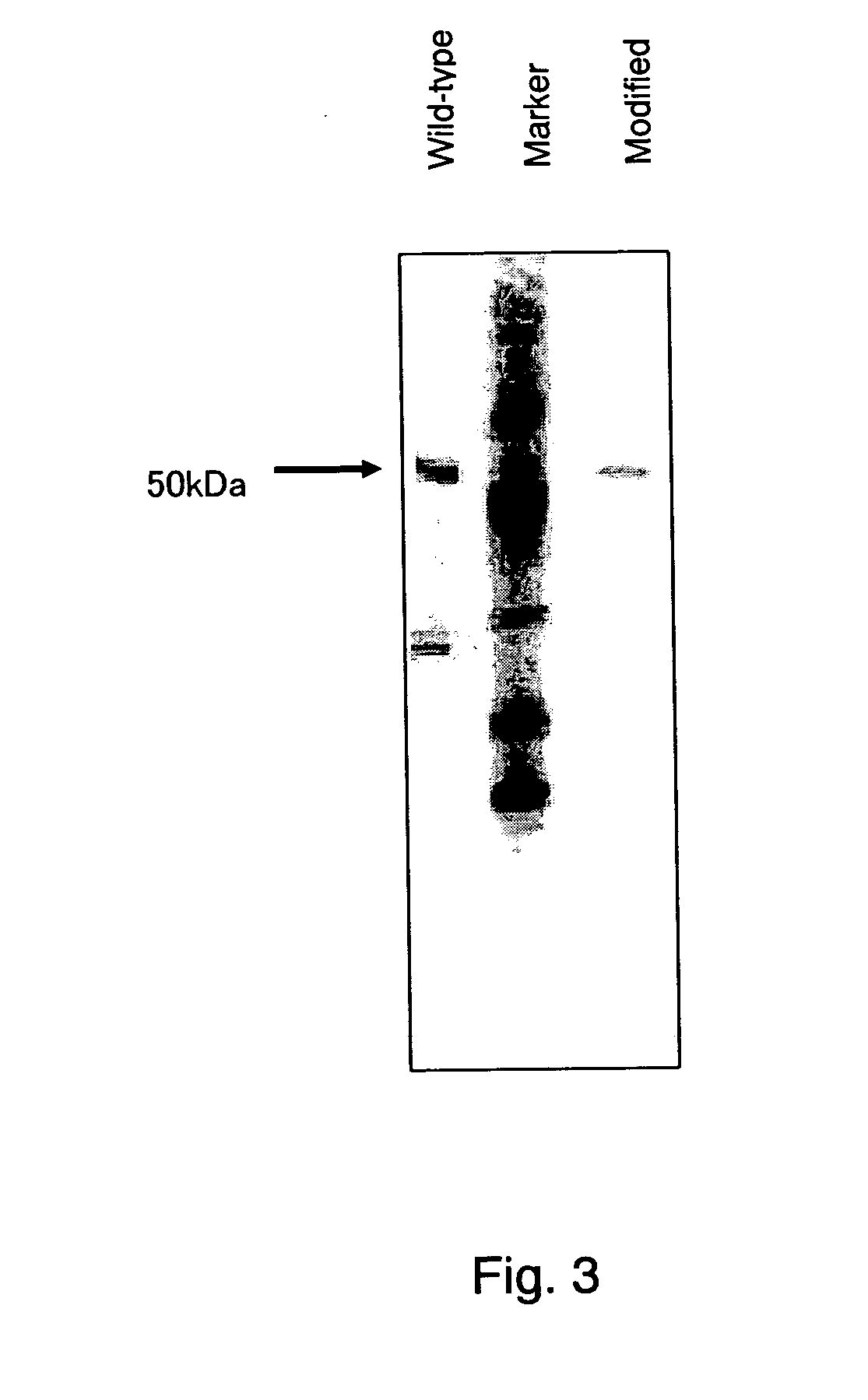Glucose dehydrogenase
- Summary
- Abstract
- Description
- Claims
- Application Information
AI Technical Summary
Benefits of technology
Problems solved by technology
Method used
Image
Examples
example 1
Construction of Modified PQQGDH Gene
[0042] A modification was introduced into the structural gene of a PQQGDH derived from Acinetobacter calcoaceticus shown in SEQ ID NO:2. A plasmid pGB2 is prepared by inserting the structural gene encoding a PQQGDH derived from Acinetobacter calcoaceticus into the multicloning site of a vector pTrc99A (Pharmacia Inc.) (FIG. 2). Nucleotide sequences encoding glutamine 209, asparagine 240, and threonine 389 were replaced with a base sequence encoding arginine by site-directed mutagenesis in the usual manner. The side-directed mutagenesis was performed using the plasmid pGB2 by the method shown in FIG. 1. The sequence of the synthetic oligonucleotide target primer used in the mutagenesis is as follows:
1 Q209R 5'-GCCAACTCAACGTGAACTGAATG-3' (SEQ ID NO:3) D229R 5'-CTTAAATCTTCGTGGAAGTATTC-3' (SEQ ID NO:4) N240R 5'-CCAAGTTTTCGCGGGGTGGTTAG-3' (SEQ ID NO:5)
[0043] A Kpn I-Hind III fragment containing part of the gene encoding the PQQGDH derived from Acinetob...
example 2
Preparation of Modified Enzyme
[0046] The gene encoding the wild-type or modified PQQGDH was inserted into the multicloning site of an E. coli expression vector pTrc99A (Pharmacia Inc.), and the resulting plasmid was transformed into the Escherichia coli strain DH50.alpha.. The transformant was shake-cultured at 37.degree. C. overnight on 450 mL of L medium (containing 50 .mu.g / L of ampicillin) in a Sakaguchi flask, and inoculated in 7 L of L medium containing 1 mM of CaCl.sub.2 and 500 .mu.M of PQQ. About 3 hours after starting cultivation, isopropylthiogalactoside was added at a final concentration of 0.3 mM, and the cultivation was continued for another 1.5 hours. The cultured cells were collected by centrifugation (5,000.times.g, 10 min, 4.degree. C.) and washed twice with a 0.85% NaCl solution. The cells were suspended in a 10 mM phosphate buffer (pH 7.0), and disrupted with a French press (110 MPa). Undisrupted cells were removed by two times of centrifugation (15,000.times.g, ...
example 3
Purification by Cation-Exchange Chromatography
[0047] The crude fraction prepared in Example 2 was filtrated through a 0.2 .mu.m filter before applying to the column. Cation-exchange chromatography was performed using CM-5PW column (Tosoh Corp.), a 10 mM MOPS-NaOH buffer (pH 7.0) as buffer A, and a 0.8 M NaCl+10 mM MOPS-NaOH buffer (pH 7.0) as buffer B.
[0048] First, the column was equilibrated with buffer A. After adsorbing the sample, the column was washed with buffer A in an amount 5 times the column volume. Then, the sample was subjected to a linear gradient of 0 to 0.64 M of NaCl (120 min) using buffer B to elute a targeted enzyme. The flow rate was 0.5 mL / min. The eluted protein was detected at an absorption wavelength of 280 nm. Aliquots of the eluent were collected in every 2 minutes The wild-type water-soluble PQQGDH showed a peak of elution at a salt concentration of about 80 mM at about 20 minutes in cation-exchange chromatography; while the modified water-soluble PQQGDH sh...
PUM
| Property | Measurement | Unit |
|---|---|---|
| Solubility (mass) | aaaaa | aaaaa |
Abstract
Description
Claims
Application Information
 Login to View More
Login to View More - R&D
- Intellectual Property
- Life Sciences
- Materials
- Tech Scout
- Unparalleled Data Quality
- Higher Quality Content
- 60% Fewer Hallucinations
Browse by: Latest US Patents, China's latest patents, Technical Efficacy Thesaurus, Application Domain, Technology Topic, Popular Technical Reports.
© 2025 PatSnap. All rights reserved.Legal|Privacy policy|Modern Slavery Act Transparency Statement|Sitemap|About US| Contact US: help@patsnap.com



